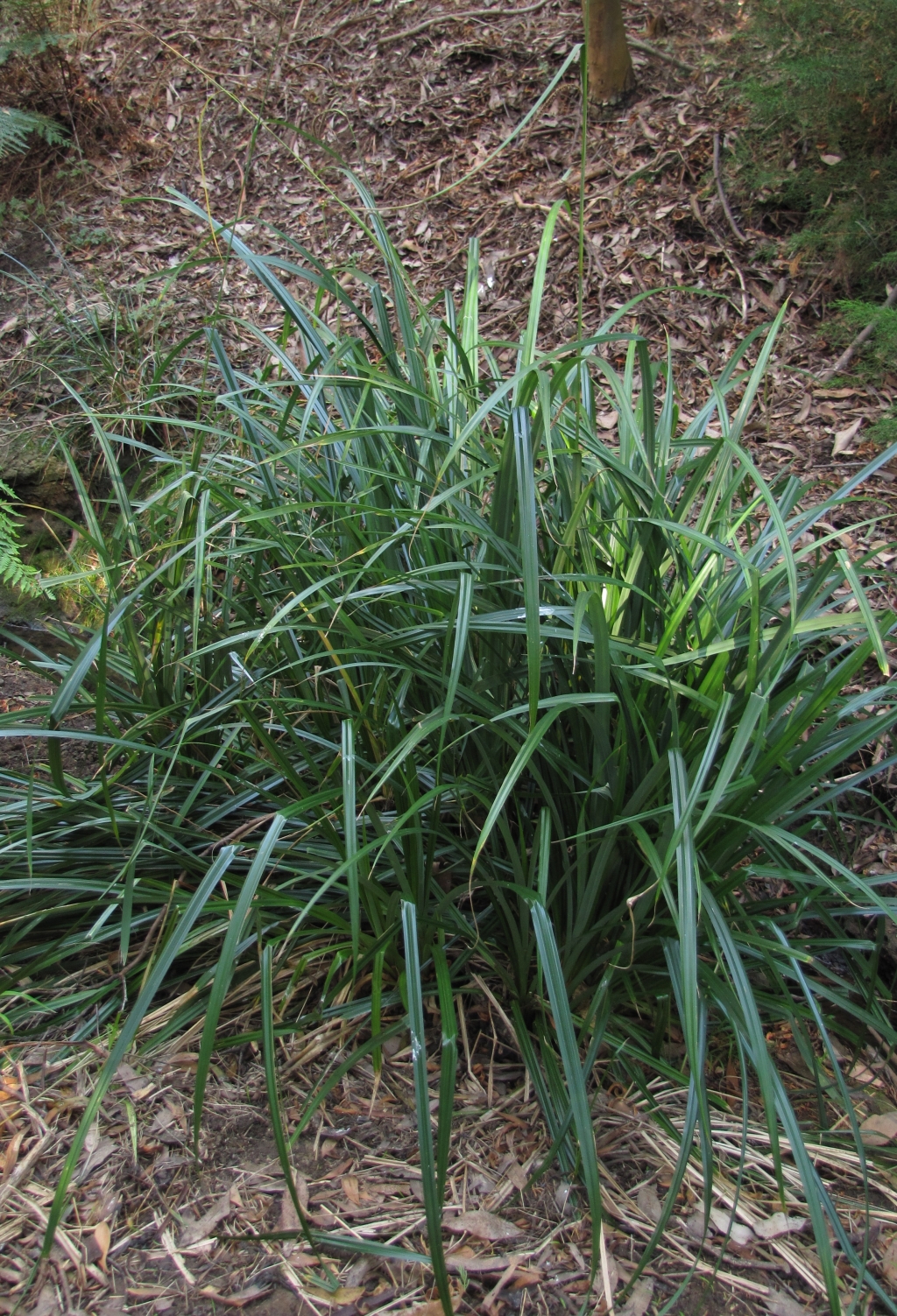Carex
Perennial herbs, tufted or with creeping rhizome, monoecious, rarely dioecious. Culms mostly trigonous, rarely noded above base, often covered at the base by persistent leaf-sheaths or their fibrous remains. Leaves basal in most species; ligule present at the junction of the blade and the sheath, and is mostly fused to the blade. Leaf-sheath often differentiated (at least in those species with three-angled culms), with the front being thin, translucent, and sometimes dotted or veined or transeversely rugose; the leaf sheath back is sometimes dotted, transversely-septate or rugose. Inflorescence panicle-like, raceme-like or spike-like, more rarely reduced to a single spike. Spikes 1–many, terete, sessile or peduncled, wholly male, wholly female, or bisexual, with few to many unisexual flowers each in the axil of a glume (rudimentary flowers may be present at the apex of the spikes). Glumes spirally arranged. Female glumes usually persistent, rarely deciduous. Involucral bracts leaf-like or occasionally glume-like, sometimes absent. Stamens 3 (or 1–3 in species previously placed in Uncinia). Pistil enclosed in a bottle-shaped prophyll (utricle); style 2- or 3-fid, protruding through the small terminal mouth of utricle. Utricles membranous, papery, leathery, or corky, keeled on the lateral angles, narrowed to a beak with truncate or 2-fid apex; rachilla usually not produced beyond the utricle (or elongated beyond utricle and stiffly hooked at tip in species previously placed in Uncinia). Nut trigonous or lenticular, enclosed in utricle.
Cosmopolitan, with an estimated 2150 species in all areas of the world, but mostly outside the tropics; c. 70 species in Australia, represented in all States. Recent molecular and morphological studies of the tribe Caricae have shown that a broader circumscription of Carex that includes Uncinia, together with several other genera from the tribe Cariceae form a well supported monophyletic group. Consequently the treatment here follows the recommendation published in 2015 by the Global Carex Group in treating Uncinia as part of a broader concept of Carex.
Hybrids seem to be much less common here than in the Northern Hemisphere.
All species are rhizomatous, although in densely caespitose species the rhizomes are often very short and inconspicuous, appearing to be absent.
The inflorescence structure is complex in this genus. The basic inflorescence unit is here termed a 'spike'. Spikes are made up of male and or female flowers, and lack a perianth. The male flower consists of 1–3 stamens. The female flower consists of the gynoecium. The terms 'spike' and 'spikelet' have in the past been used in different senses, and therefore the term 'spikelet' is avoided in this treatment. In some species such as Carex appressa and Carex incomitata the whole inflorescence is narrow and spike-like but is composed of many small spikes.
The term 'glume' is used here although, strictly, 'bract' is more accurate.
The phrase 'leaf sheath front' as used here refers to the side of the sheath which ends at the sheath orifice, on the side opposite the blade. 'Leaf sheath back' refers to the two sides of the sheath that together end in a blade.
Glume length includes mucro. Utricle length includes the beak (which is described in the terms used by Jermy et al. (2007)). In species with septate-nodulose leaves, the cross-veins are not always obvious until dry.
Inflorescence length is from the bottom of the sheath of the lowest inflorescence bract or lowest glume to the tip of the uppermost spike.
A number of non-Australian species are available or have been available in the nursery trade in Victoria, including the New Zealand species Carex albula, Carex buchananii, Carex comans, Carex flagellifera, Carex petriei, Carex secta, Carex testacea, and Carex virgata, all of which readily self-seed in gardens, and are likely to become naturalised and invasive. Other species that are sold or have been sold include Carex morrowii (from Japan), and Carex riparia (northern Africa, Asia, and Europe) (Hibbert 2004).
Wilson, K.L. (1994). Cyperaceae. In: Walsh, N.G.; Entwisle, T.J., Flora of Victoria Vol. 2, Ferns and Allied Plants, Conifers and Monocotyledons, pp. 238–356. Inkata Press, Melbourne.
 Spinning
SpinningSynonyms
Global Carex Group (2015). Making Carex monophyletic (Cyperaceae, tribe Cariceae): a new broader circumscription . Botanical Journal of the Linnean Society 179(1): 1–42.
Hibbert, M. (2004). Aussie Plant Finder. Florilegium, Glebe, NSW, Australia.
Jermy, A.C.; Simpson, D.A.; Foley, M.J.Y.; Porter, M.S. (2007). Sedges of the British Isles, edn 3. Botanical Society of the British Isles.




